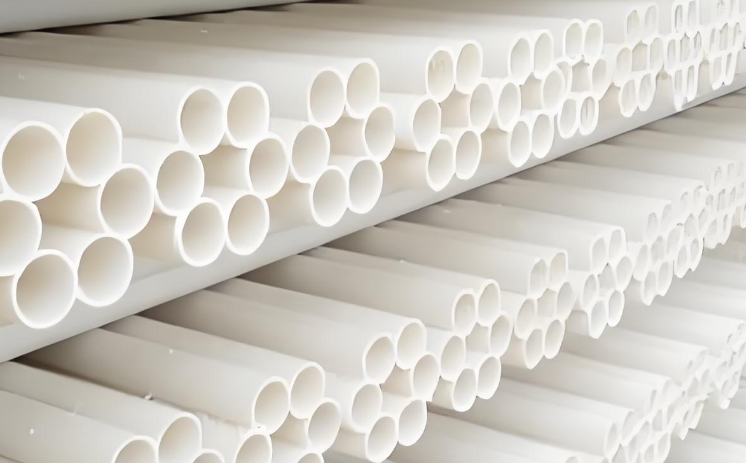
Understand the Types of Fittings
Couplings: Couplings are used to connect two pipes of the same diameter. They come in different lengths and styles. For example, a straight coupling is a simple, cylindrical fitting that provides a basic connection between two pipes. Offset couplings, on the other hand, are used when there is a need to connect two pipes that are not in perfect alignment. They can help to correct minor misalignments and provide a smooth transition between the pipes.
Elbows: Elbows are designed to change the direction of the pipe. There are 90 - degree elbows and 45 - degree elbows. A 90 - degree elbow is useful for making sharp turns, such as in a corner of a building's plumbing system. A 45 - degree elbow provides a more gradual change in direction and is often used when a less - abrupt turn is needed to reduce the impact on fluid flow. The radius of the elbow can also vary, with long - radius elbows being preferred in applications where minimizing flow resistance is important.
Tees: Tees are used to split or combine the flow of a fluid. A tee fitting has three openings and can be used to connect a branch pipe to a main pipe. For example, in a sprinkler system, a tee can be used to connect a lateral sprinkler line to a main water - supply line.
Caps and Plugs: Caps are used to close the end of a pipe, while plugs are used to seal an opening in a fitting. They are essential for preventing leaks and keeping the system clean during installation or when a particular section of the pipe is not in use.
Consider the Pipe Schedule and Diameter
Schedule Compatibility: The schedule of the PVC pipe (such as Schedule 40 or Schedule 80) determines its wall thickness and pressure - rating. It's crucial to choose fittings that match the schedule of the pipe. Fittings for Schedule 40 pipes have different dimensions and pressure - ratings than those for Schedule 80 pipes. Using mismatched fittings can lead to leaks or a system that doesn't meet the required pressure standards. For example, a coupling designed for a Schedule 40 pipe may not fit properly on a Schedule 80 pipe, and even if it does, it may not be able to handle the higher pressure that a Schedule 80 pipe is designed for.
Diameter Matching: The diameter of the fitting must match the diameter of the pipe. PVC pipes have a nominal diameter, and the fitting should be selected to match this nominal size. However, it's important to note that the actual inner and outer diameters can vary slightly between different manufacturers. Therefore, it's a good practice to check the actual dimensions provided by the manufacturer to ensure a proper fit. In a water - supply system, for example, using a fitting with a slightly larger or smaller diameter than the pipe can lead to leaks or reduced flow efficiency.
Evaluate the Pressure and Temperature Requirements
Pressure - Rating: The pressure - rating of the fitting should be equal to or higher than the maximum expected pressure in the system. In a high - pressure application, such as an industrial chemical - transfer system, using fittings with a low pressure - rating can result in leaks or even catastrophic failure. Manufacturers provide the pressure - rating information for their fittings, and it's essential to select fittings that can withstand the pressure of the fluid being transported. For example, if the system is designed to operate at a maximum pressure of 200 psi, the fittings should have a pressure - rating of at least 200 psi.
Temperature Considerations: The temperature range in which the fitting will be used is also an important factor. Some PVC fittings are designed for use in normal temperature environments, such as in a residential cold - water supply system. However, in applications where the temperature can vary widely or reach high levels, such as in a hot - water supply or an industrial process with heated fluids, it's necessary to choose fittings that can handle the temperature changes. CPVC (chlorinated polyvinyl chloride) fittings are often used in hot - water applications due to their better heat - resistance compared to standard PVC fittings.
Think about the Application and Chemical Compatibility
Application - Specific Fittings: Different applications may require specialized fittings. For example, in a drainage system, fittings with weep holes or perforations may be needed to allow water to enter or exit the system properly. In an irrigation system, fittings with barbs or quick - connect features can make it easier to attach hoses or drip emitters. Consider the specific requirements of your project and choose fittings that are designed for that application.
Chemical Compatibility: If the PVC pipes will be used to transport chemicals, it's crucial to ensure that the fittings are chemically compatible with the substances. Some chemicals can cause the PVC or the fitting's adhesive (if solvent - cement is used) to degrade. Manufacturers provide information about the chemical resistance of their fittings, and it's important to refer to this data. For example, in a chemical - processing plant, using fittings that are not resistant to the chemicals being transported can lead to leaks and potential safety hazards.
Copyright Reserved 2025 SHENZHEN CHINA PIPE SUPPLIES
Fuyuan building NO.460 FanShen Road BaoAn District SHENZHEN City, GUANGDONG Prov. CHINA 518000

 +8617727596190
+8617727596190